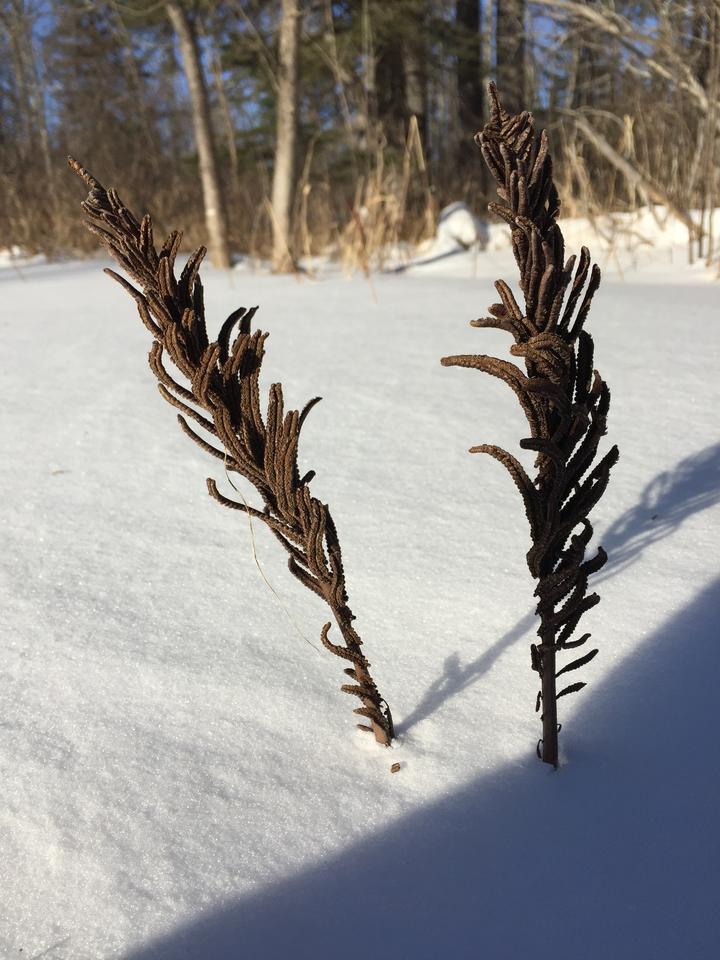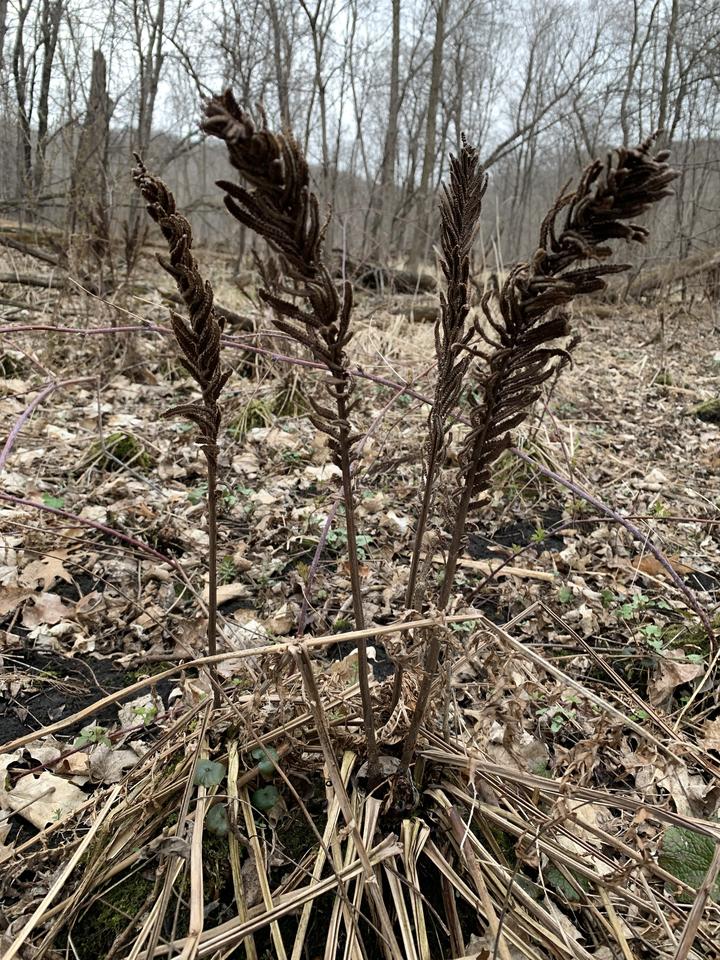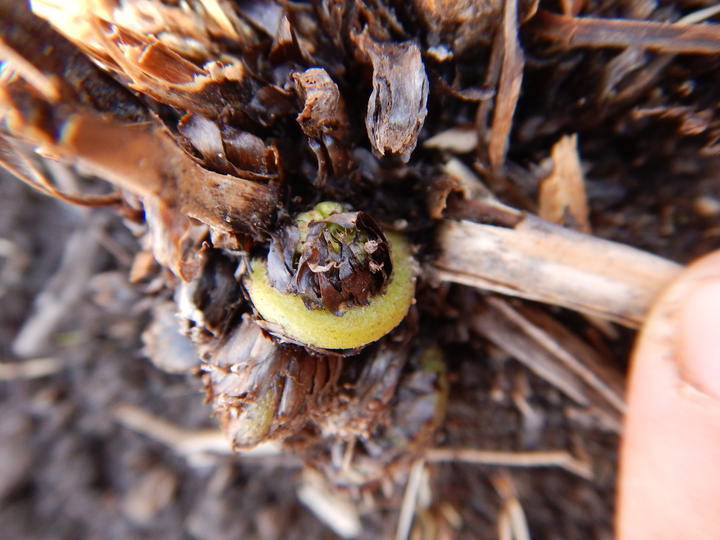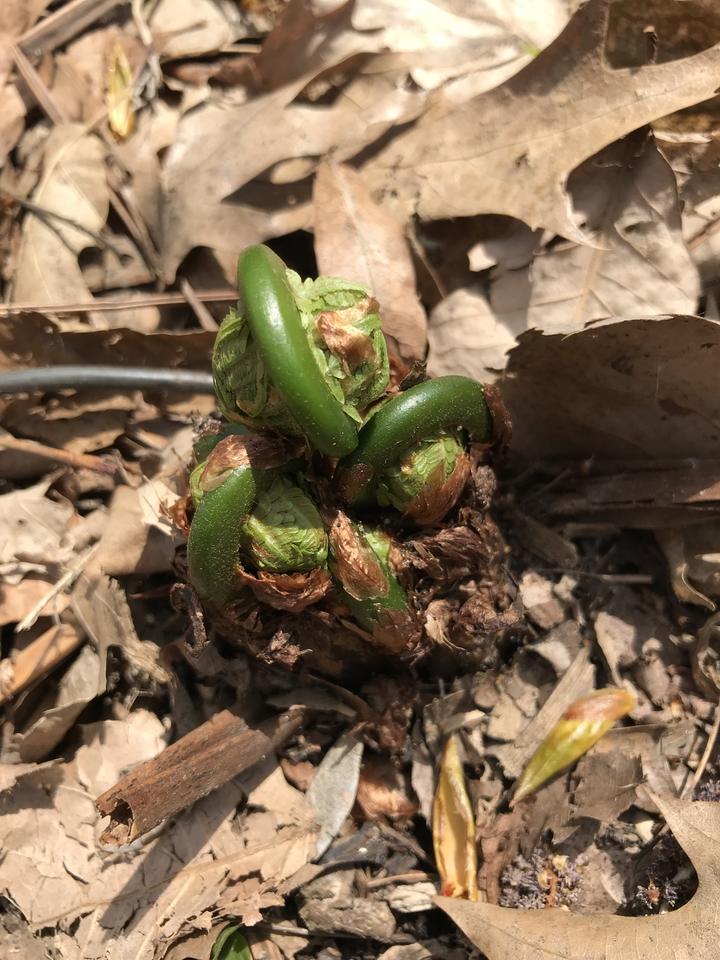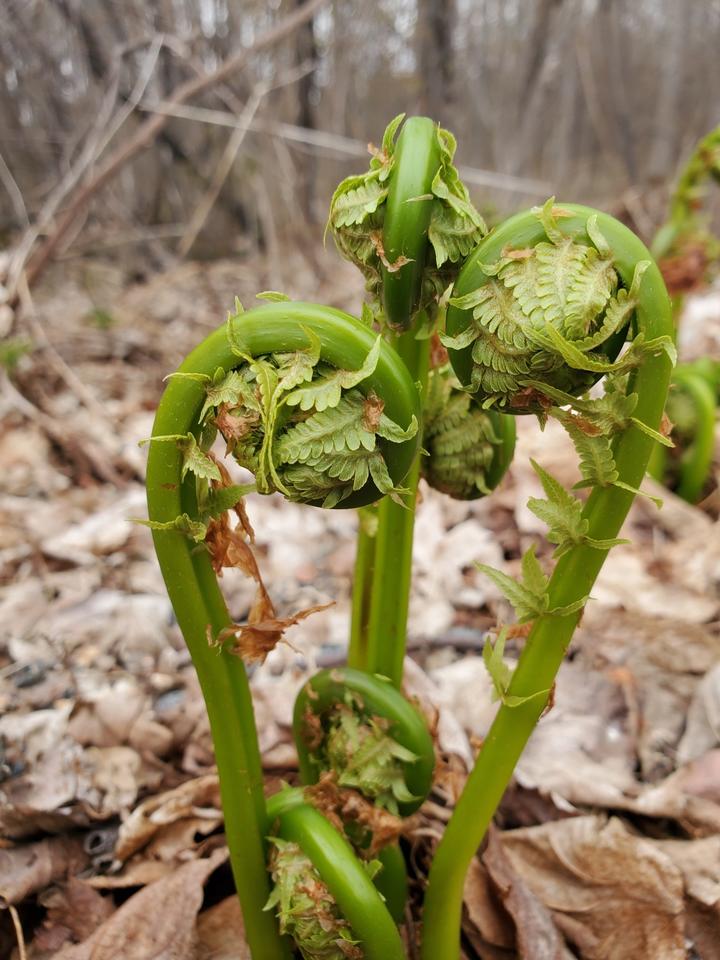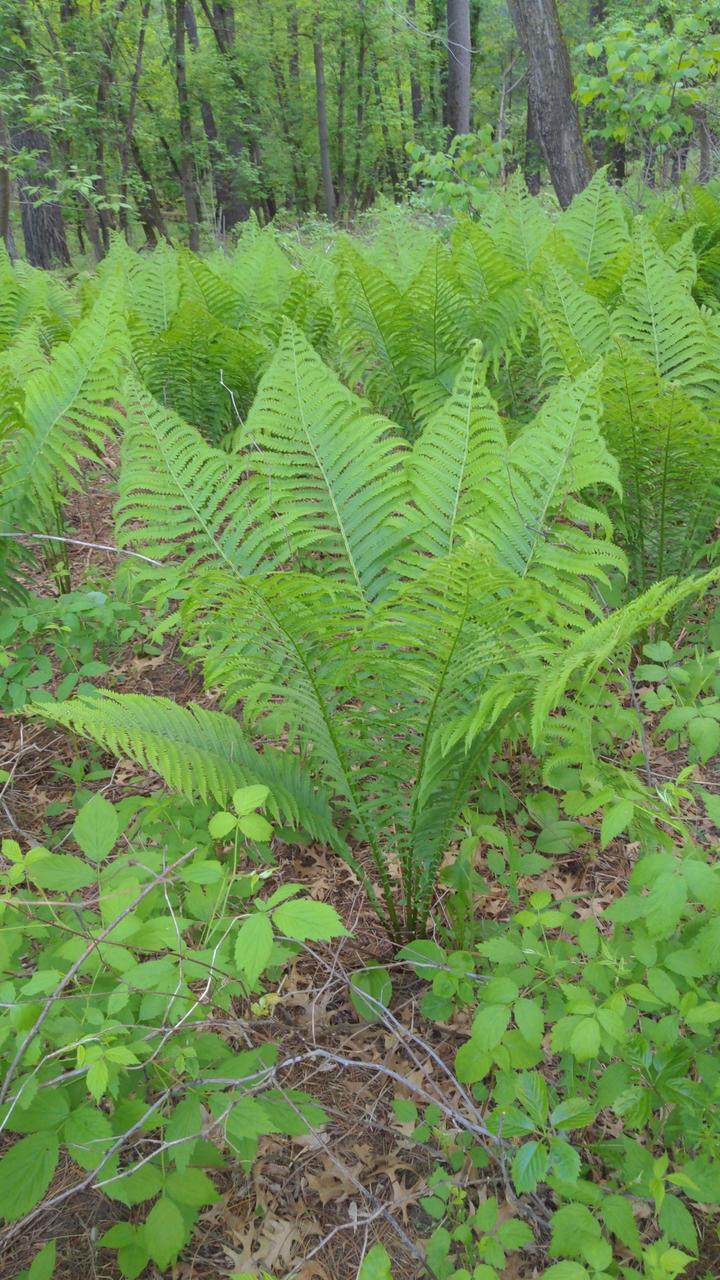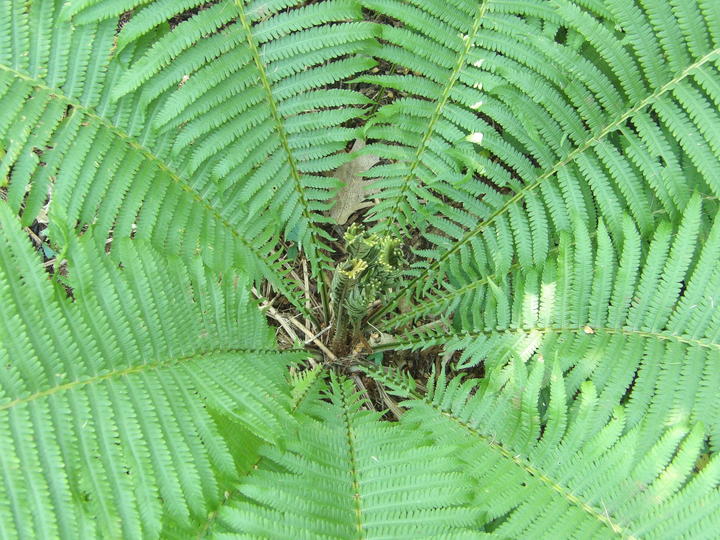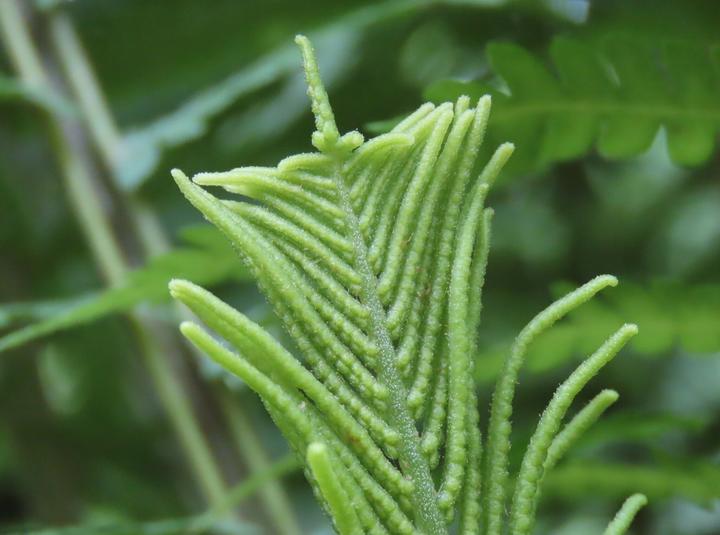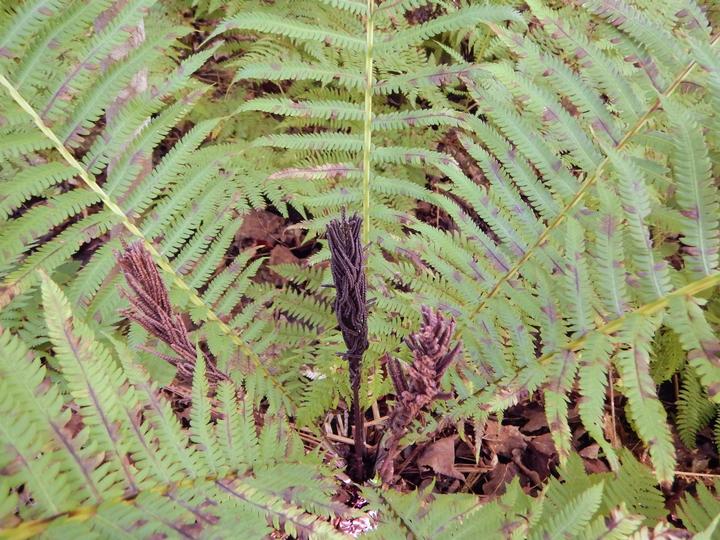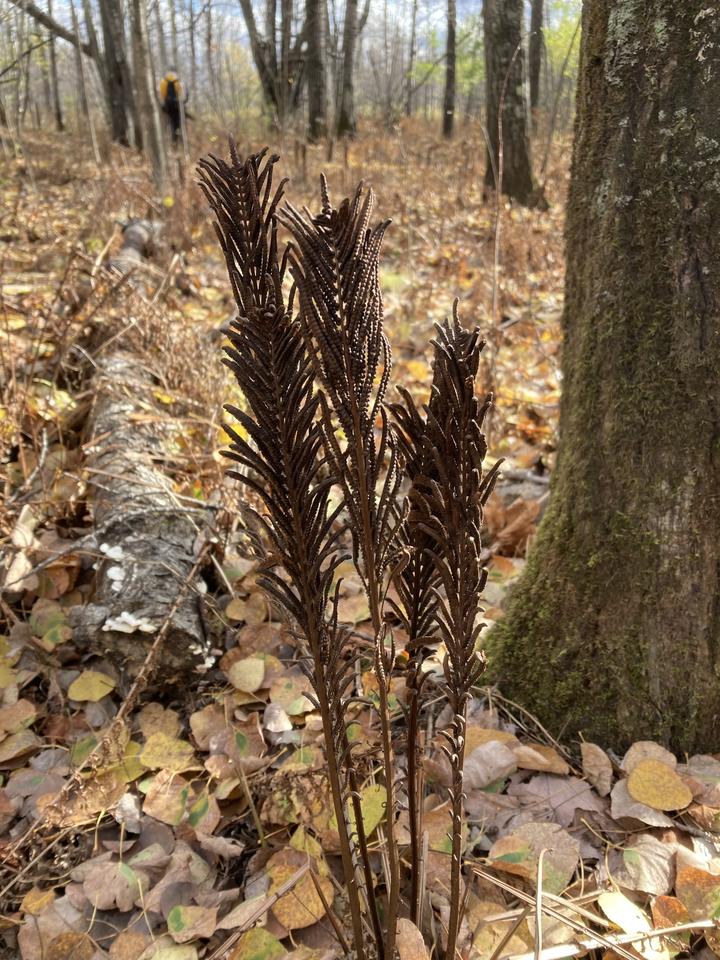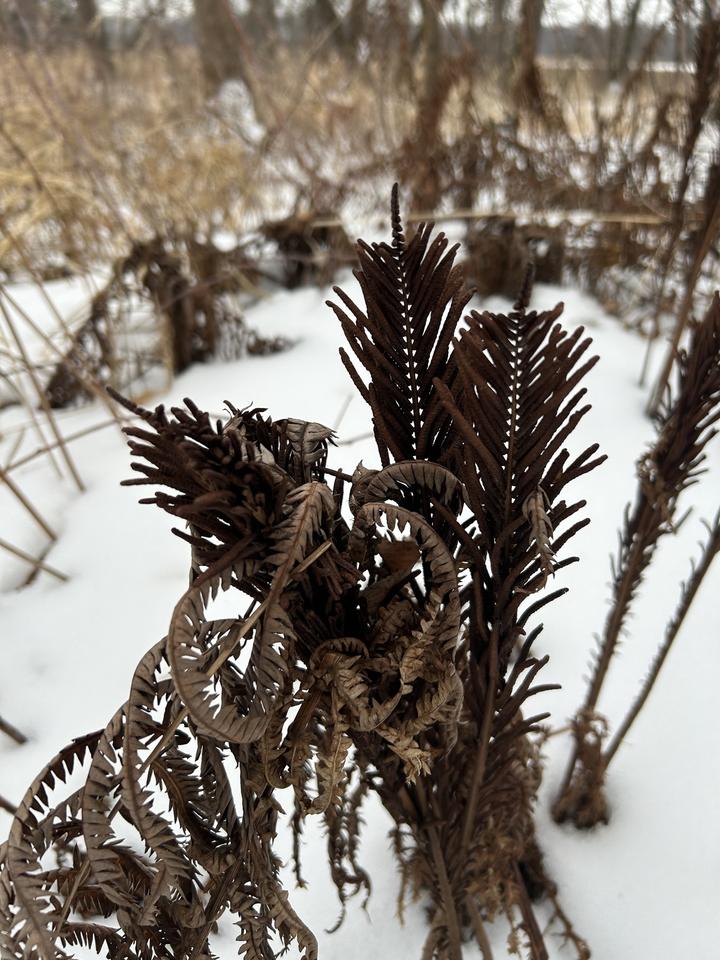More names for this plant
The Dakota and Anishinaabe were among the earliest people to name Minnesota’s plants and animals, as well as to understand them in relation to Minnesota’s climate and seasons. Those original names are still in use, and several are included on the Season Watch website. However, complete translations were not available.
Latin (or scientific name): Matteuccia struthiopteris
The scientific community has a convention of assigning agreed-upon Latin names to every kind of organism. Using scientific names helps people communicate confidently about the same organism and organize lifeforms based on how closely related they are.
Page contents
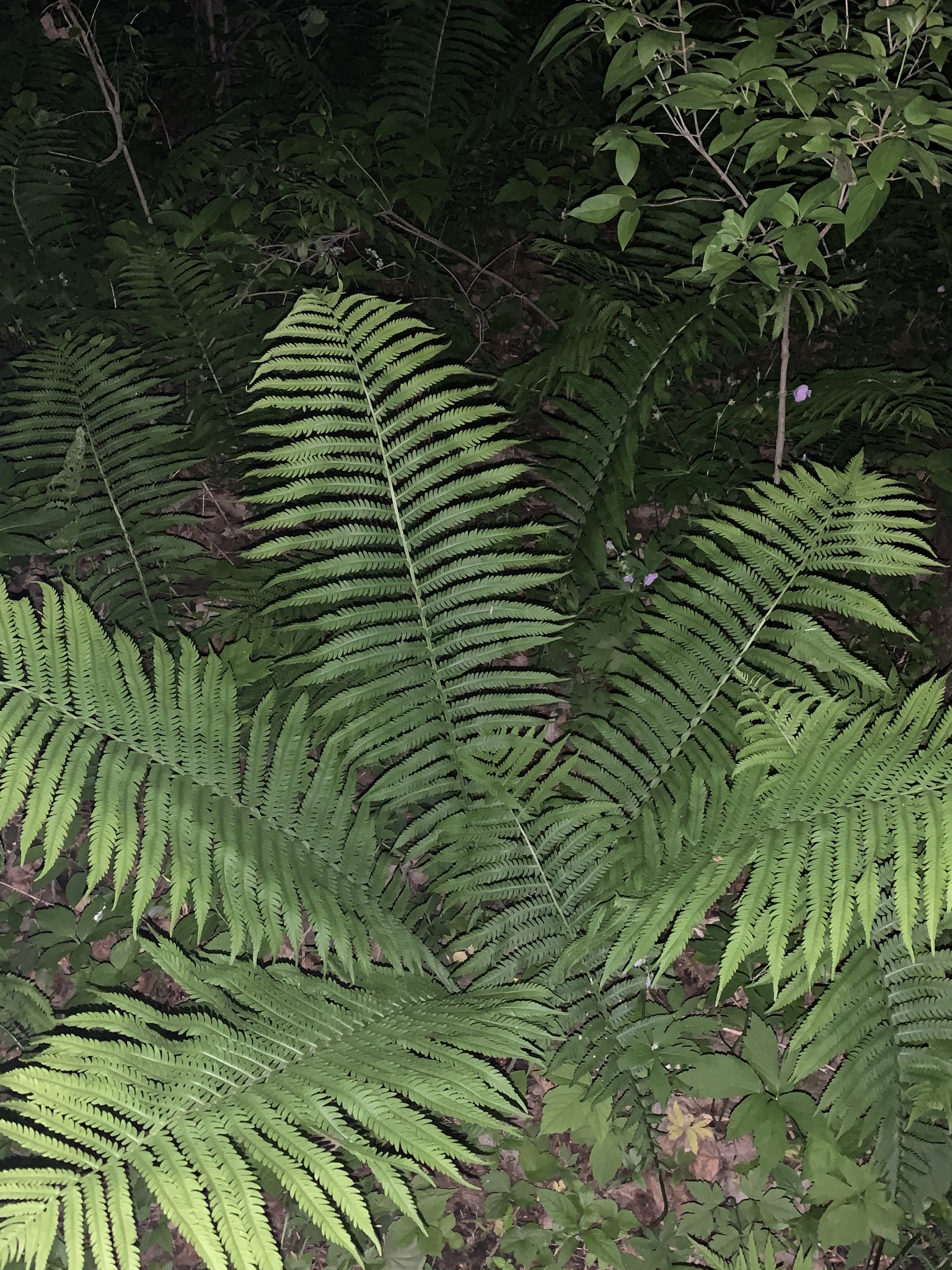
May 31, 2021, Washington County, Minnesota
Photo © Matthew Thompson, some rights reserved (CC-BY-NC)
iNaturalist observation
About the ostrich fern
- The ostrich fern is a tall perennial plant that grows up to one to five feet in height.
- These plants grow throughout Minnesota except for the southwest corner of the state.
- The ostrich fern produces long leaves, called fronds, made up of twenty to sixty smaller leaflets.
- In the center of the plant there are also separate leaves for reproduction that produce spores.
- These fertile fronds grow and mature from mid-summer through fall, when they will turn dark brown. They remain visible throughout winter.
- The spores are released in late winter to early spring.
- Fun fact: The young fronds, known as fiddleheads, are toxic when raw, but when cooked they can be consumed. They are similar in taste to asparagus or broccoli.
Visual guide to phenology
Watch for the appearance of and status leaves and spore-bearing structures.
Note to observers
This page explains general clues to watch for when observing ostrich fern phenology. However, this page does not explain how to identify this plant or collect data in a standardized way.
- For help with identification, see Minnesota Wildflowers.
- For guidance on collecting data, see Nature’s Notebook.
Keep exploring Season Watch
Keep exploring Season Watch
Co-author: Lynsey Nass, Minnesota Master Naturalist
